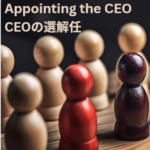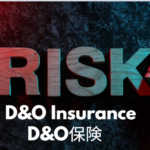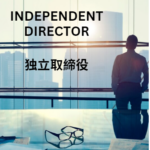
This is the transcript of the second episode of T&P’s video series “ESG Insights for Legal Departments.” Please visit T&P’s website for the video in Japanese.
Make a new forum entry
| 11/17(Fri) Director Boot Camp |

This is the transcript of the second episode of T&P’s video series “ESG Insights for Legal Departments.” Please visit T&P’s website for the video in Japanese.
The ratio of independent directors is on the rise, with the number of companies with a majority of independent directors (more than 50%) increasing to 280 out of the 1,781 companies in the Metrical Universe at the end of September 2023. I would like to examine the characteristics of companies with a majority of independent directors.
The chart below shows the number of companies in the Metrical universe with a majority of independent directors (more than 50% independent directors). Since there are less than 1,800 companies in the Metrical universe, the percentage of companies in the universe with a majority of independent directors (more than 50%) has just risen to 15.7% as of the end of September 2023, so it will take some time before a majority of companies have a majority of independent directors on their boards. It is likely to take some time before the majority of companies have a majority of independent directors on their boards. However, the number of such companies is gradually increasing.
In October, the stock market was in step with the U.S. stock market, which rose and fell in response to changes in U.S. long-term interest rates, and after a decline at the beginning of the month and a rebound in the middle of the month, the stock market was in a selling trend toward the end of the month.
The CG Top 20 index outperformed the TOPIX and JPX400 indexes for the second consecutive month in October.
TSE has released the material “Status of Companies’ Responses and Follow-up on “Responses to Achieve Management Conscious of Cost of Capital and Stock Prices” at the 11th Follow-up Meeting on Revision of Market Classification held on August 29, 2023. I would like to provide a summary of this document below and consider the issues discussed.
Status of display regarding “Measures to realize management conscious of cost of capital and stock price”
Based on the corporate governance reports* of listed companies in light of the recent request for “measures to realize management with awareness of cost of capital and stock price” (compiled as of mid-July, when the CG reports of companies whose fiscal year ended in March were available).
※ The current request does not specify the documents to be disclosed, but requires that a statement be made in the CG report to the effect that disclosure has been made and the method of access to such disclosure.

At Livedoor, I soon proposed that we set up committees of the board to oversee the granular matters in areas such as M&A, finance, and so forth, thinking that this would allow us to specialize to some extent, so that not all of us would have to oversee minor details. But since there was little trust between the new outside directors, everyone immediately wanted to be a member of all committees, and it was impossible to deny anyone that opportunity. The end result was simply to make it unnecessary to reflect some important discussions in the formal board minutes, because the “committee” meetings were not actual “board” meetings.

In Livedoor’s case, before I joined the board it seemed clear to me that eventually, the company would most likely have to be liquidated. It had acquired a lot of companies in addition to operating its portal web site, but there were no synergies between them, and there was very little oversight of subsidiaries. It had no strategy, and its brand name had been destroyed. If anything, being affiliated with the Livedoor name actually reduced the value of its businesses and subsidiaries to some extent, in terms of their ability to get business.

If you are ever in the situation I described in “Outside Director Lessons #8” (see link below), here is what you can do. To begin with, in that situation, you might begin before the AGM, by quietly asking the person that investors supposedly want as the new CEO, if he or she really wants the position and why. Being a CEO is always a lot of work, especially if you have other activities. The person may respond without a lot of clarity, or even signal a sort of reluctance. That is vital information.

Before Livedoor’s December 2006 AGM, one of the other newly nominated “independent directors”, asked me whether (if elected) I would vote to remove the current CEO. I replied that I could not answer that question, because I was not on the board yet and had no direct knowledge about what was going on inside the company, including the performance of the CEO.
In response, this director candidate responded, “But if the shareholders want that, how can we not fire him?”

In my view, at the end of 2006 I had been nominated in the Livedoor proxy materials for the December AGM without my agreement. This was partly because just saying in quick email that one may be “interested” does not mean one has “decided”. But more importantly, two of the conditions I had clearly set forth, which were dependent on Livedoor itself taking action, had not been fulfilled at all: specification of compensation, and assurance of D&O insurance. When I inquired about the latter, I was told by a senior “advisor” at the company that Livedoor had tried to get D&O insurance from more than 20 insurance companies in Japan, and had been turned down by everyone.

When Livedoor was delisted in the spring of 2006, its shareholder composition suddenly became a big issue. Why? Because the majority of its stock were held by a large group of funds (mainly hedge funds) who never thought that their stock would be delisted by the TSE so soon and become untradeable. Another large portion was held by a combination of ordinary institutional investors and a corporation or two. The rest was held by a very large number of individuals, many of whom had spend large amounts of their limited savings on the stock because the company had done so many stock splits that the low price made it easy to buy, and made it look cheap, at the same time.